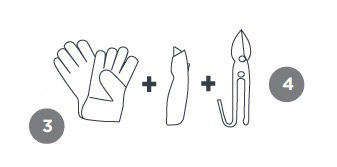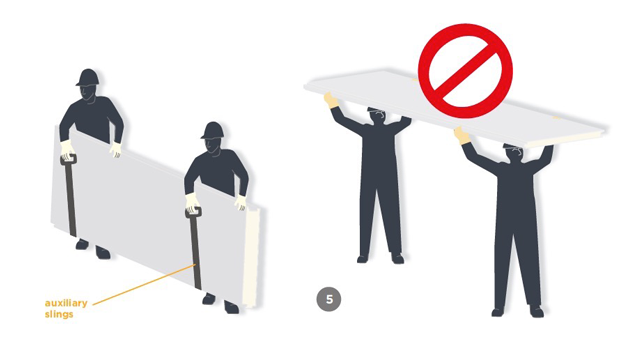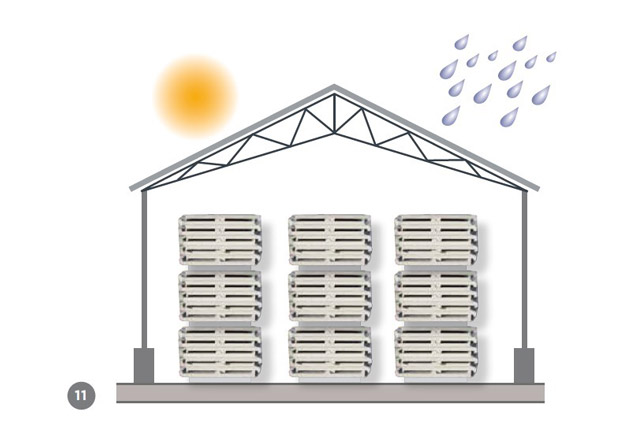Once the panels have been fitted on-site, a general cleaning should be performed. Be sure to remove all metal chips or burrs and any objects, metallic or otherwise, that may be on the surface, so as to remove possible focal points for the formation of rust. If necessary, use a mild household detergent without caustic soda.
Before starting any maintenance work please remember that our roofing is not designed for frequent heavy walking, but just for walking on occasionally; always avoid stepping on flashings, ridges and any installed trim, always wear rubber-soled shoes and safety gloves; do not drag equipment or tools along the surface of the roofing.
·Inspect the gutters and downpipes twice a year.
·Carry out an annual cleaning, including skylights. If necessary use a mild household detergent, without caustic soda. Do not use brushes, metal scouring pads or other abrasive materials.
·Make an annual check on the condition of mouldings and trims, sealants and screw fittings that are exposed to the elements.
·Inspect the areas of sheet overlaps, the state of the sealant and of the screw fittings and, if necessary, re-seal.
·If lightning conductors are installed, make an annual inspection of the condition of the installation.
·For panels with a polyester paint finish, check the state of the paint every two years. For special finishes the first inspection should be carried out as from the fifth year.












